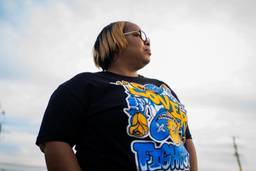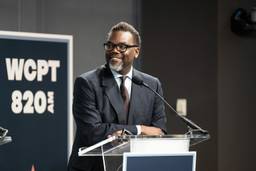Is Climate Change Causing Pre-traumatic Stress Disorder in Millennials?
Today’s youth are coming of age in the age of extinction
Martin de Bourmont and Dayton Martindale

For the better part of a century, from Hiroshima through the Cold War, people around the world lived in visceral fear of nuclear annihilation. At any moment, the “finger on the button” could launch the end of civilization.
In Nuclear Fear: A History of Images, Spencer Weart, a scientific historian, chronicles the psychological toll this anxiety took on individuals, especially the young. “Well after the Cuban Missile Crisis,” he writes, a poll “found 40 percent of adolescents admitting a ‘great deal of anxiety’ about war.” He cites another survey from 1965 asking schoolchildren to predict the state of the world 10 years ahead. Though the questions made no mention of nuclear bombs, “over two-thirds of the children mention[ed] war, often in somber terms of helplessness.”
Today’s youth live with a different kind of dread. For the post-Cold War generation, the primary global threat comes not from action, but inaction. Last year, the American Association for the Advancement of Science warned that within a few decades, climate change will have “massively disruptive consequences to societies and ecosystems,” including widespread famines, lethal heat waves, more frequent and destructive natural disasters, and social unrest. Despite the litany of warnings like these, governments have utterly failed to take meaningful action.
At this point, climate change can be limited or accelerated, and humans can adapt to some degree, but significant damage to the planetary ecosystem can no longer be averted.
According to Washington, D.C.- based forensic psychiatrist Lise Van Susteren, the expectation of climate-change disasters is causing “pre-traumatic stress disorder.” In an interview with Esquire in July, she explains that the symptoms look much like those of post-traumatic stress disorder: “the anger, the panic, the obsessive, intrusive thoughts.”
Signs of pre-traumatic stress are increasingly evident among those who stare at the problem of climate change head-on: climate scientists, climate journalists and climate activists. The Esquire piece profiled a number of climate scientists and activists who experienced profound psychological trauma in the course of their work.
Paul Ehrlich is an ecologist at Stanford University and the coauthor of a recent paper arguing that a sixth mass extinction is already underway. He has put civilization’s chances of saving itself at about 10 percent — but he’s beginning to think that’s too optimistic. When asked by In These Times how he deals with the prospect of societal collapse, Ehrlich chuckles: “I drink a lot.”
Katie Herzog, an environmental journalist for Grist, says it’s “something easier to ignore if you don’t work in the business” — her friends are probably tired of hearing that “the planet is going to shit.” She’s “worried about the world that children will inherit,” and thinks it’s “irresponsible to have kids. I take solace that I’m not bringing life into the world that’s going to suffer.”
Slate’s climate reporter Eric Holthaus, a meteorologist by training, made waves when he publicly declared that he cried reading an Intergovernmental Panel on Climate Change report. “I go back and forth day-to-day between despair and optimism.” After much internal debate, he, unlike Herzog, did decide to have a child. “Before we had our baby it felt much easier to just give up,” he says. Now, “I feel an added pressure to keep trying.”
Those who pay close attention to climate change are deeply concerned for the next generation. And a significant portion of the next generation, it seems, is concerned for itself.
The young and the stressed
A 2007 poll of more than a thousand middle schoolers found that almost 60 percent feared climate change more than terrorism, car crashes or cancer. Roughly the same percentage thought more needed to be done to combat the threat, and more than 40 percent reported that concern about climate change occasionally occupies their minds.
“Unlike adults who can put their heads in the sand … kids are very aware of what’s going on,” said Chris Saade, a North Carolina-based psychotherapist, in a 2014 interview with The Globe and Mail. “Children often ask me questions that we, as adults, try to evade: ‘What is going to happen to the human race?’ ”
Most of the middle schoolers from 2007 are now in their early 20s. For a generation that was born after the Cold War and came of age in the Anthropocene, to what extent does climate fear persist into young adulthood?
In a June 2015 Pew poll, 51 percent of Americans aged 18 to 29 rated climate change a “very serious” problem, compared to 47 percent of those 30 to 49, 44 percent of those 50 to 64, and 41 percent of those 65 and over. Fifty-one percent may seem a slim majority, but in light of what we know about human psychology, it’s actually quite striking. A 2009 report on climate-change psychology by the American Psychological Association explains that people tend to underestimate the danger of events perceived as having a “small probability.” Climate risks, which are believed by many to be uncertain, far off in the future, or occurring in remote parts of the planet, should follow this logic.
Yet a majority of millennials rate the threat as very serious. While polls shed some light on young people’s concern levels, no large qualitative surveys exist to illuminate the depth of their worries or how the emotional impact of climate change influences their life choices.
In response to her own anxieties surrounding climate change, poet and Brown University English lecturer Kate Schapira, 36, set up a booth in 2014—modeled after Lucy’s 5-cent psychiatric service in the Peanuts comic strip — offering “climate anxiety counseling.” She recorded the resulting conversations with strangers, acquaintances and loved ones on her blog. One anonymous interviewee describes getting “hives sophomore year of college thinking about climate change.” Another visitor to Schapira’s booth says, “My entire life, climate change has been in my awareness … and I think it should worry everyone.”
“It seems to me that climate change, ecological degradation and the other anxieties my students share with me actually have the same root: a kind of hierarchy that favors and rewards exploitation and fear-based grabbiness,” says Schapira. “Great instability causes great emotional distress.”
To find out more about how young people are coping, In These Times spoke with 17 current and recently graduated students from 10 colleges and universities. Most came from multi-college listservs of student divestment activists. Some had pursued the subject academically, and a few had no significant background on the issue.
Rachel Fifi, 22, is a Columbia University student from New Orleans whose family was impacted by Hurricane Katrina when she was a child. Today she’s an activist with Columbia Divest for Climate Justice. “I watched this video about determining one’s own gender, and in it a woman said violence in her childhood was ‘a pain so distant it was intimate,’ ” she says. “The strange combination of survivor’s guilt, anger, and loss I feel when I think about Katrina and climate change feels like exactly that. Pain, but so old, taken for granted, displaced and tired that it resembles intimacy and understanding rather than suffering.”
“I used to feel sad on warm winter days as early as middle school because I knew the world was warming,” says Peter Thacher, a divestment activist at the University of Pennsylvania.
“While [climate change] doesn’t affect me on a day-to-day basis, it is probably my greatest existential concern,” says Eric Collins, a 23-year-old Ohio resident. When asked if the world was getting better or worse, Collins responded, “Probably worse.” Lingwei Cheng, 22, a masters student at the University of Chicago, says, “It will decrease my standard of living because eventually we will need to give up consuming energy with abandon.”
Preston Kemeny, 22, a recent Princeton graduate with a degree in geosciences, feels “extremely” anxious. What concerns him most is the destruction of the planet’s biosphere. “If only humans were at risk, that would be a different question,” he says. “Then this whole debacle would simply be a tragedy and a lost opportunity for our cool speciesthat has some special tricks.”
But some interviewees found reason for optimism. “All of the democratic mass resistance popping off around the world gives me hope,” says Peter Soeller of Brooklyn, New York. “There’s a silver lining to all of this and it’s an excuse for us to build the type of world we’d like to live in.”
Schapira thinks that the best way to address climate distress is with “genuinely purposeful action” — practical ways of engaging with climate change in one’s own life.
Char Miller, a professor of environmental analysis at Pomona College who talks daily with “students and alumni who are wrestling with the existential crisis of climate change,” says that, as a coping mechanism, “more and more students focus on things they can put their hands on, deciding to become architects and urban planners or learning how to farm.”
College campuses have also become the main battleground of the fossil fuel divestment movement, and more than 50,000 students showed up at the September 2014 People’s Climate March. Earlier that year, on March 2, students helped create the largest single-day civil disobedience action at the White House in decades, as part of the anti-tar sands protest XL Dissent. More than a thousand people marched through the streets of Washington, D.C., that day, and 398 — almost all students (full disclosure: including one of the authors) — were arrested.
‘I will not do nothing’
The burden placed on the shoulders of today’s youth remains enormous. They must learn to live in the midst of an existential threat without precedent. Though survival depends on collective action, each will forge his or her own understanding of a world in flux.
Philosopher Dale Jamieson, a professor at NYU and author of Reason in a Dark Time: Why the Struggle Against Climate Change Failed — And What it Means for Our Future, thinks this will be painful, but manageable. “Human animals are extremely adaptive. People have managed to have meaningful lives and lives that are valuable to them in unspeakable conditions.”
Jamieson allows that a meaningful life can still hold tragedy, and believes many will be devastated “not just by the monetary or physical effects of climate change,” but by “being in a world that’s increasingly a human world … the species equivalent of living in your own head.”
In some ways, our society — or at least the politicians and business elites who fail to appreciate the apocalyptic implications of climate change — appears to be already trapped in its own head. The lack of significant political action on climate change was a concern for most of the young people interviewed for this piece. This is in line with polling data suggesting that young voters want substantive political and economic action to combat climate change. In a 2014 University of Texas at Austin poll, 68 percent of voters younger than 35 said they were more likely to vote for candidates who support reducing carbon emissions, compared to 50 percent of voters 65 and older. Younger voters were also much more likely than other age groups to support curbing fossil fuel use and expanding financial incentives for renewables.
Mikelis Beitiks, 32, is running in California for U.S. Senate in 2016 with a simple slogan: “I will not do nothing.” On his website, he writes: “I run for Senate on a narrow platform. It’s more of a single board, really. If elected, I promise to monomaniacally create and support legislation that combats climate change.”
The site is full of darkly humorous rhetoric: a shirtless and sweaty Beitiks with the caption “We’re literally going to die,” simple philosophical statements like “I do not like unnecessarily dead things,” an “upcoming events” page that includes “spin the cylinder of a revolver, cry,” and action plans like, “Everyone has to breathe more shallowly” and “Cutting down trees will now be called ‘arbortion.’ ”
“I’m not the only person who’s sat there and thought, ‘Whoa, this is very terrifying,’ ” he tells In These Times. “It’s a very heavy burden to carry … There’s a lot of people who feel like us. Anybody reading this article and feeling like this, they should know they’re not alone … everyone would rather be doing something than nothing.”
He has also corresponded with individuals he calls “near-term extinction people,” who give humans only a few decades, though he does not share their apocalyptic vision. “I have two young kids,” he says. “I can’t afford to not have hope.”
As he brings his campaign to news outlets like MSNBC, scientists continue to research mass extinctions, journalists continue to document human and nonhuman suffering, and students continue to stage sit-ins and petition drives. Climate change leads some to a dark mental place, but for many there is meaning in resistance.
“Activism, for me, is essential,” says Columbia junior Elana Sulakshana, 22, who works with Columbia Divest. “It inspires and empowers me, and consistently motivates me to keep fighting.”
As Pope Francis writes in his recent climate-focused encyclical, “Let us sing as we go. May our struggles and our concern for this planet never take away the joy of our hope.”
Or as Beitiks puts it: “If you look death in the eyes and you don’t laugh, you’re kind of missing the point of life. If you do nothing, you’re also missing the point of life.”





